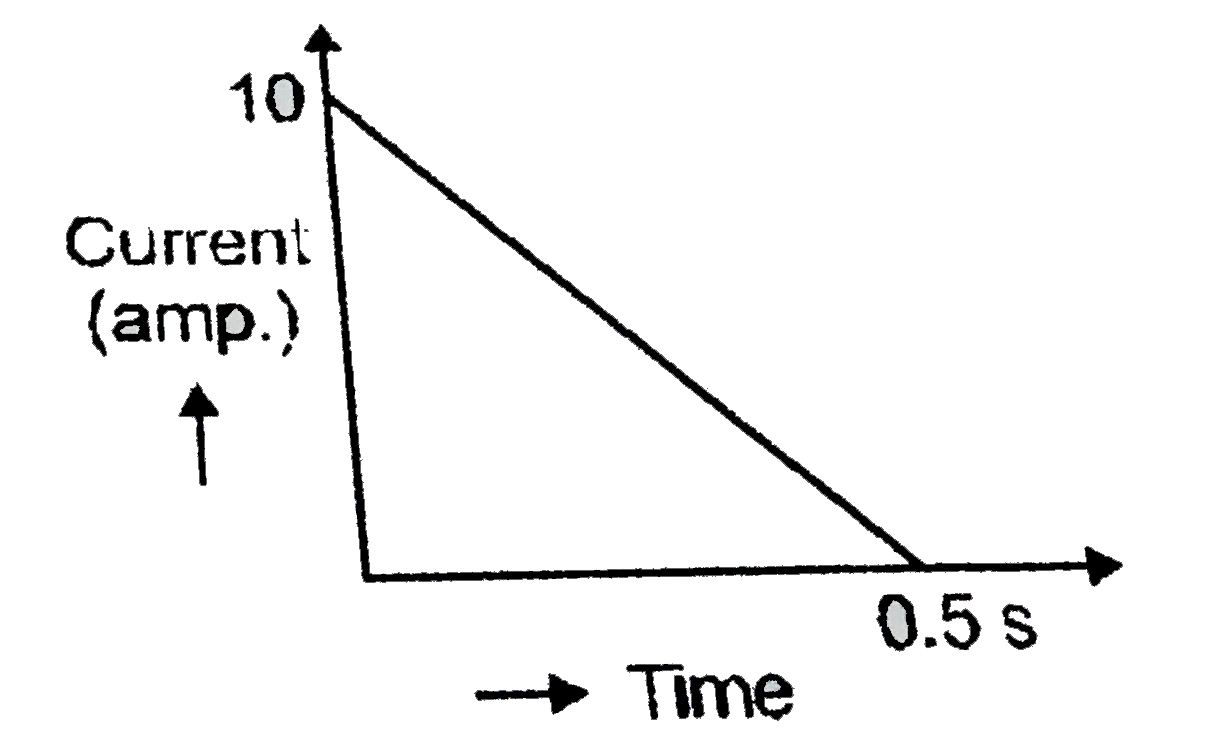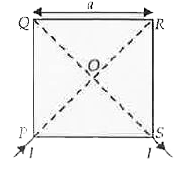A special metal S conducts electricity without any resistance. A closed wire loop made of S does not allow any change in flux through itself by inducting a suitable current to generate a compensating flux. This current gives rise to a magnetic moment which in turn repels the source of magnetic field or flux. Consider such a loop, of radius a, with its center at the origin. A magnetic dipole of moment m is brought along the axis of this loop from infinity to a point at distance r(>> a) from the center of the loop with its north pole always facing the loop, as shown in the figure below.
The magnitude of magnetic field of a dipole m at a point on its axis at distance r is μ0m2πr3. The magnitude of the force between two magnetic dipoles with moments m1 and m2 separated by a distance r on common axis with their north pole facing each other is km1m2r4 where k is a constant of appropriate dimensions. The direction of this force is along line joining two dipoles. Work done in bringing dipole from infinity to a distance r from center of the loop by given process is proportional to
Work done in bringing dipole from infinity to a distance r from center of the loop by given process is proportional to
Step by step video & image solution for A special metal S conducts electricity without any resistance. A closed wire loop made of S does not allow any change in flux through itself by inducting a suitable current to generate a compensating flux. This current gives rise to a magnetic moment which in turn repels the source of magnetic field or flux. Consider such a loop, of radius a, with its center at the origin. A magnetic dipole of moment m is brought along the axis of this loop from infinity to a point at distance r(>> a) from the center of the loop with its north pole always facing the loop, as shown in the figure below. The magnitude of magnetic field of a dipole m at a point on its axis at distance r is (mu_0 m)/(2 pi r^3). The magnitude of the force between two magnetic dipoles with moments m_1 and m_2 separated by a distance r on common axis with their north pole facing each other is (k m_1 m_2)/r^4 where k is a constant of appropriate dimensions. The direction of this force is along line joining two dipoles. Work done in bringing dipole from infinity to a distance r from center of the loop by given process is proportional to by Physics experts to help you in doubts & scoring excellent marks in Class 12 exams.
Updated on:21/07/2023Topper's Solved these Questions
Similar Questions
A special metal S conducts electricity without any resistance. A closed wire loop made of S does not allow any change in flux through itself by inducting a suitable current to generate a compensating flux. This current gives rise to a magnetic moment which in turn repels the source of magnetic field or flux. Consider such a loop, of radius a, with its center at the origin. A magnetic dipole of moment m is brought along the axis of this loop from infinity to a point at distance r(>> a) from the center of the loop with its north pole always facing the loop, as shown in the figure below. The magnitude of magnetic field of a dipole m at a point on its axis at distance r is μ0m2πr3. The magnitude of the force between two magnetic dipoles with moments m1 and m2 separated by a distance r on common axis with their north pole facing each other is km1m2r4 where k is a constant of appropriate dimensions. The direction of this force is along line joining two dipoles.
 When the dipole m is placed at a distance r from center of the loop the current induced in the loop will be proportional to
When the dipole m is placed at a distance r from center of the loop the current induced in the loop will be proportional to
View SolutionThe magnetic dipole moment of a current carrying conducting loop depends on
View Solution
Knowledge Check
The magnetic dipole moment of current loop is independent of
Anumber of turnsBarea of loopCcurrent in the loopDmasgnetic field in which it is lyingThe magnetic dipole moment of a current loop is independent of
Amagnetic field in which it is lyingBnumber of turnsCarca of the loopDcurrent in the loopThe net magnetic flux through any closed surface, kept in a magnetic field is
AzeroBμ04πC4πμ0D4μ0π
What is magnetic dipole moment of a current loop? Give its direction if any.
View SolutionIn a coil of resistance 100Ω , a current is induced by changing the magnetic flux through it as shown in the figure. The magnitude of change in flux through the coil is

View SolutionThe net magnetic flux through any closed surface, kept in a magnetic field is
View SolutionA circular loop of radius r, carrying a current I lines in y - z plane with its centre at the origin. The net magnetic flux through the loop is
View SolutionPQRS is a square loop of a conducting wire. A current I enters the loop at Pand leaves the loop at S. The magnitude of magnetic field at the centre o of the square is

View Solution